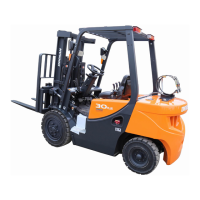- 8 -
Fuel Information
What is LPG?
LPG is “liquefied petroleum gas”. The largest
component of LPG is propane (C
3
H
8
), a
combustible hydrocarbon based fuel. It comes from
the refining of crude oil and natural gas. At normal
pressure (29.92”HG) and temperatures above -
44˚F/-45˚C propane remains in it’s gaseous form.
At lower temperatures and/or higher pressures
propane will become a liquid. Propane is colorless
and odorless. For safety reasons propane is
required to be odorized as to indicate positively, by
distinct odor, the presence of gas in air down to a
concentration of not over 1/5th the lower level of
flammability (0.4% in air). This is achieved by
adding 1.0#s of ethyl mercaptan, or 1.0#s of
thiophane, or 1.4#s of amyl mercaptan per 10,000
gallons of LPG. There are currently three grades of
propane available, HD5 for internal combustion
engines, commercial propane and commercial
propane/butane mix for other uses. The exact
composition of propane varies slightly between
different parts of the country and different
refineries. Compared to gasoline the energy
content of LPG is 74%.
HD5 PROPANE
Propane Propylene Butane Iso-Butane Methane Total
(C
3
H
8
)(C
4
H
10
) (CH
4
)
90.0% min. up to 5% 2.0% 1.5% 1.5% 100%

